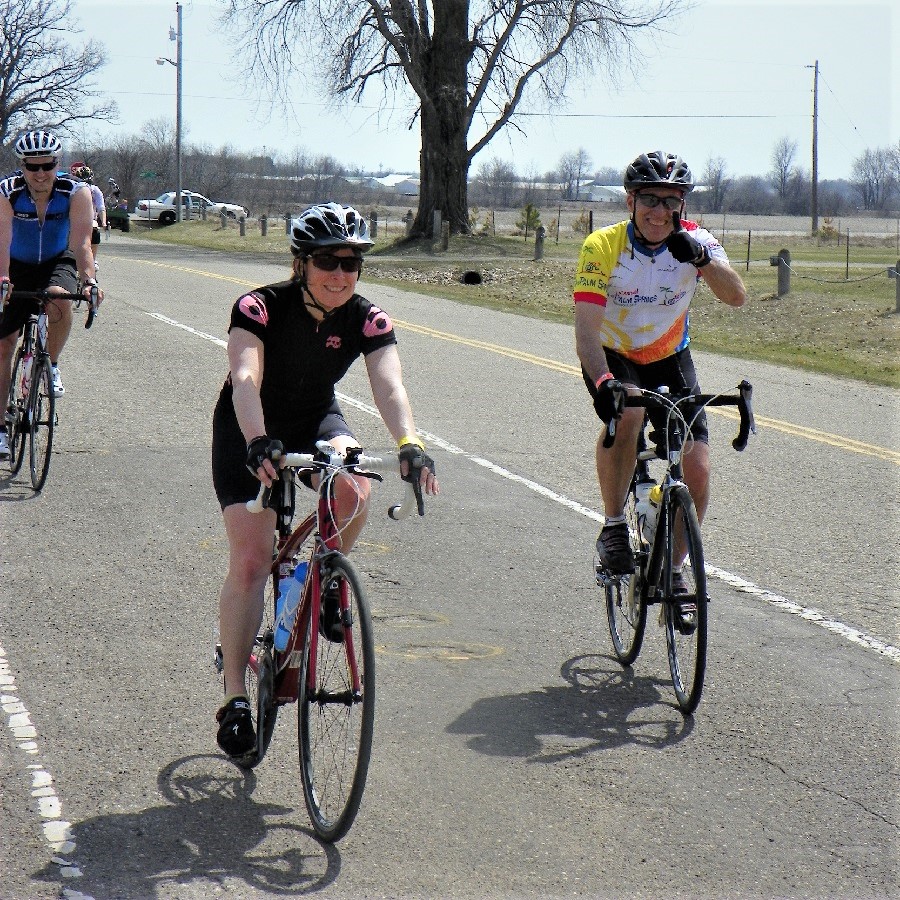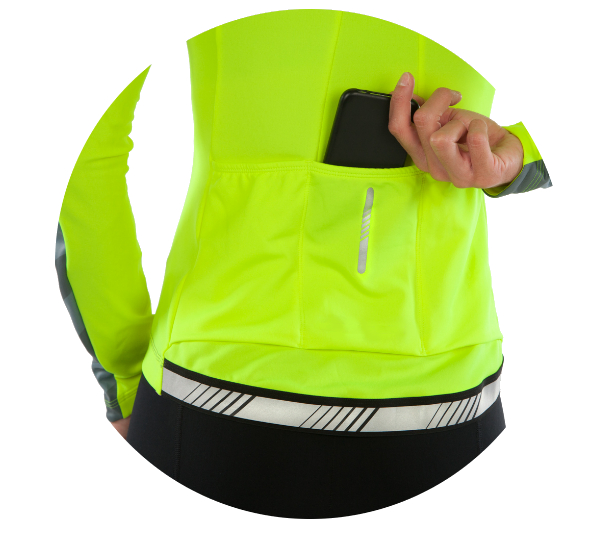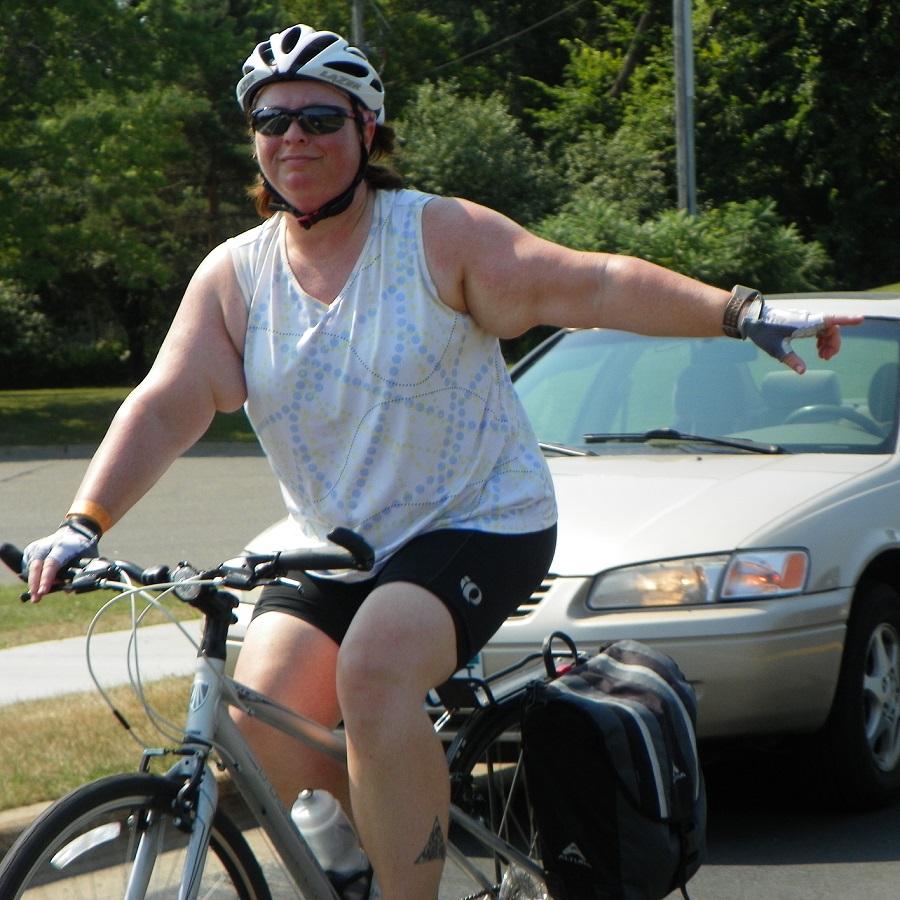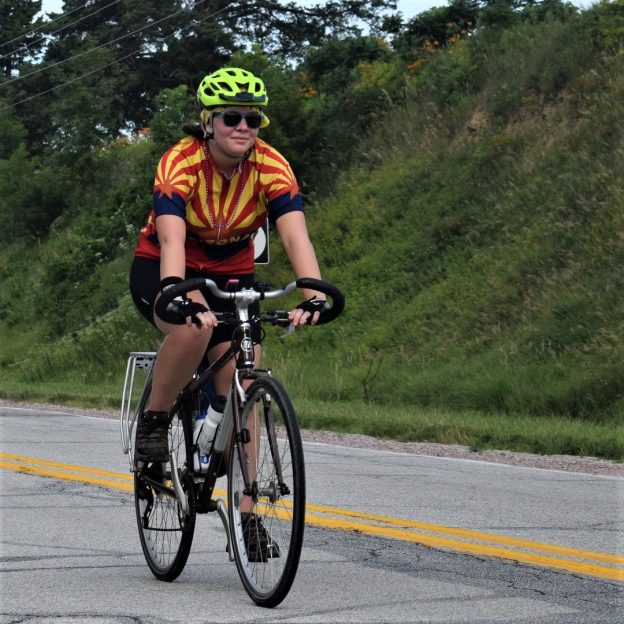by John Brown
Now with spring riding soon in full swing, stay visible and noticed. Wear clothing that makes you stand out to others while riding your bike or walking. Being noticed by others is the key to avoiding accidents. Focus on the two forms, passive and active visibility, to help stay safe. Things like reflectors and bright colors, especially in patterns that make you stand out, are forms of passive visibility. While lights and blinkers are great examples of active visibility, most people focus on nighttime visibility. Though, far more hours are spent in broad daylight riding a bike. Here are a few tips to keep you safe and visible whenever you ride.
Clothing that makes you more visible and noticed
Read on to see where each one is helpful and most efficient.

The easiest way to be visible is to wear obvious clothing. Whereas black may be slimming, it doesn’t offer others the best chance to see you. The most visible color available is high visibility (hi-vis) yellow. It is bright yellow not found naturally and sticks out against the backdrops on most normal roads and paths. If hi-vis yellow isn’t for you, try to wear other colors that would stand out, like bright blue, red, or orange. Better yet, an obnoxious pattern of several above-mentioned colors, so you are sure to be noticed.

Lights that make you visible and noticed
Many companies are recommending riders use their lights during the day and at night for a great reason. Active forms of visibility like blinking lights do a lot to attract the attention of others. For best visibility and longest battery life, use your lights in “blink mode” rather than a steady beam.

Reflectors that makes you more visible and noticed
Most cars sold in the US are equipped with daytime running lights. For that reason, the reflectors on your bike will shine back at drivers during the day and alert them to your presence. Beyond the standard reflectors your bicycle comes with, think about adding adhesive reflective tape to bags, helmets as well as your bike.
Position
Being visible while riding can be as simple as your position on the road to be noticed. In situations where there isn’t enough room for a bike and car, be sure to take up enough space to ensure no driver could miss seeing you and try to “squeeze” past. Also, ride at a controlled speed where there may be blind corners, driveways, or crosswalks. Additionally, don’t stop in places where others can’t see you until it’s too late.

Signal
No amount of visibility will make up for erratic riding. Be sure to signal where you are going so auto drivers, other cyclists, and/or pedestrians know where you are headed. When overtaking riders or walkers from behind, be sure to let them know where you are going with a simple “on your left” or “on your right.” Then, give them a moment before passing and ring a bell if you have one.
Kids
Kids riding bikes is something we need to preserve in this digital world. The best way to keep kids on bikes is to keep them fun and safe. Try to have two adults riding with kids if possible, one leading and one following. Be sure to remind children of how and when to signal, and dress them in colorful clothing. Because kid’s bikes are lower to the ground than an adult bikes, they can go unnoticed. A flag mounted to the bike reminds drivers that there is a bike below.

Following these tips will limit the chance of an accident and keep your ride fun and safe.



